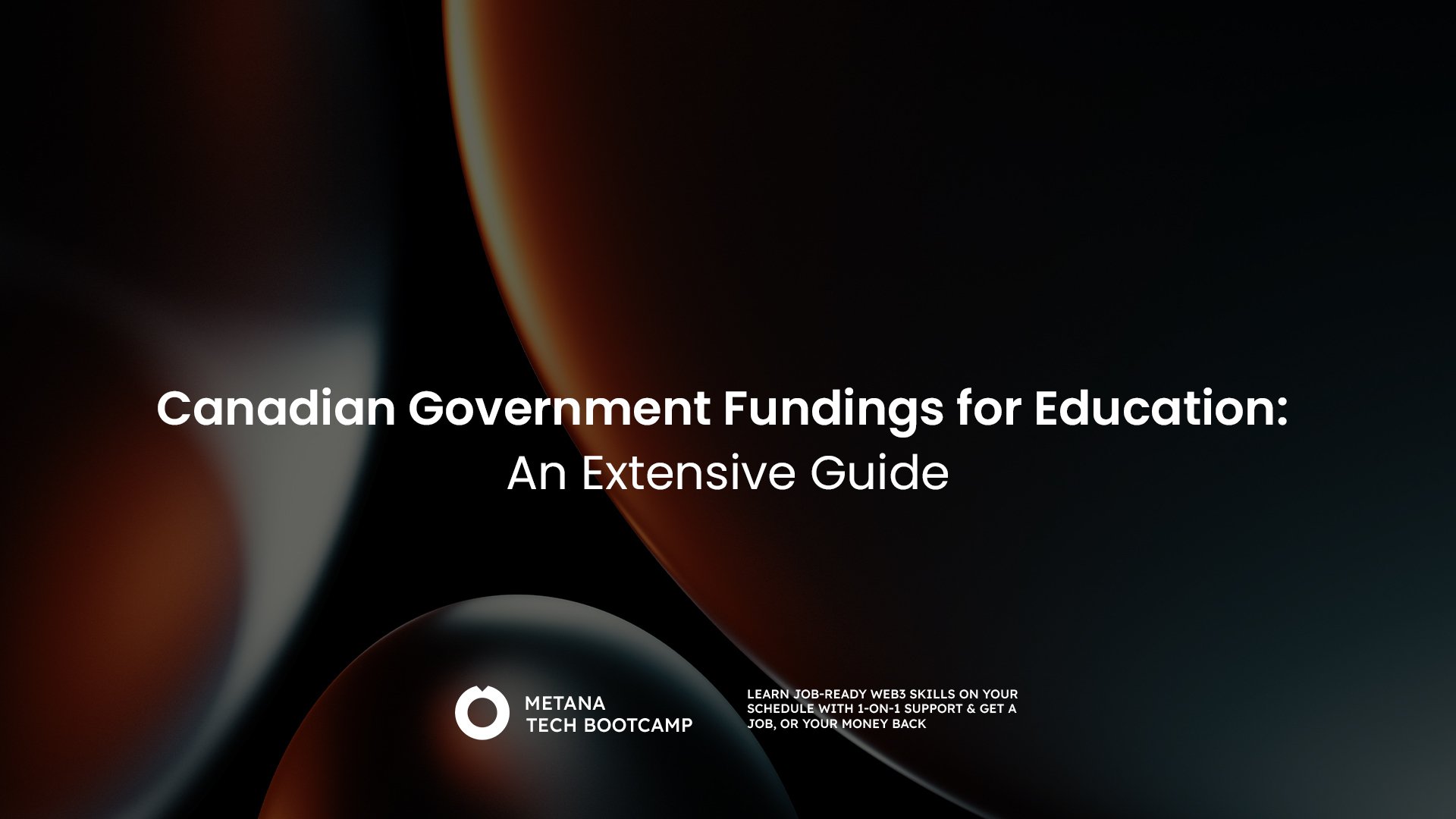TL;DR
- The Canadian government offers various funding programs for education at both federal and provincial levels.
- Federal programs include the Canada Student Loans Program, Canada Education Savings Program, and Canada Job Grant.
- Each province and territory has its own education funding initiatives tailored to regional needs.
- The application process involves researching programs, gathering documents, submitting applications, and following up.
- Exploring multiple funding sources, including scholarships and employer-sponsored training, can maximize financial support.
In today’s rapidly changing job market, continuous learning and upskilling have become essential for individuals to stay competitive. Recognizing the importance of education and training, the Canadian government offers a variety of funding programs to support individuals and organizations in their pursuit of knowledge and skills development. From federal initiatives to provincial and territorial funding options, there are numerous opportunities available for Canadians to access financial support for education. In this comprehensive guide, we will explore the different programs of Canadian government fundings for education to help individuals and businesses invest in education and training.
Federal Funding for Education
The Canadian government plays a significant role in providing funding for education across the country. Whether you are a student looking for financial assistance or an organization seeking support for training programs, there are several federal initiatives available to help you achieve your goals.
Canada Student Loans Program
The Canada Student Loans Program (CSLP) is a federal initiative that provides financial assistance to eligible post-secondary students. Through this program, students can access loans, grants, and repayment assistance to help cover the costs of tuition, books, and living expenses. The CSLP offers both need-based and non-need-based funding options, ensuring that students from all financial backgrounds have access to higher education.
To apply for a Canada Student Loan, students must meet certain eligibility criteria, including being a Canadian citizen, permanent resident, or protected person, and being enrolled in a designated post-secondary institution. The amount of funding awarded is based on factors such as the student’s financial need, the cost of their program, and their family income.
Canada Education Savings Program
The Canada Education Savings Program (CESP) is designed to help families save for their children’s post-secondary education. The program includes two main components: the Canada Education Savings Grant (CESG) and the Canada Learning Bond (CLB).
The CESG is a grant provided by the federal government to encourage parents to save for their child’s education. Under this program, the government matches a percentage of the contributions made to a Registered Education Savings Plan (RESP). The grant amount is based on the family’s income, with higher-income families receiving a lower percentage match.
On the other hand, the CLB is targeted towards lower-income families. It provides an initial contribution to the RESP and subsequent annual contributions until the child reaches the age of 15. The CLB aims to ensure that children from financially disadvantaged backgrounds have access to funds for their education.
Additional Federal Funding Initiatives
In addition to the Canada Student Loans Program and the Canada Education Savings Program, the Canadian government offers various other funding initiatives to support education and skills development. These include:
- The Canada Job Grant: This program provides funding to employers to help cover the costs of training their employees. It encourages businesses to invest in skills development and ensures that workers have access to the training they need to succeed in their careers.
- The Youth Employment and Skills Strategy: This initiative aims to help young Canadians gain the skills and work experience necessary to transition into the workforce. It offers funding to organizations that provide employment and skills development programs for youth.
- The Indigenous Skills and Employment Training Program: This program provides funding to Indigenous organizations and communities to support skills development and employment initiatives for Indigenous peoples. It aims to address the unique challenges faced by Indigenous communities in accessing education and training opportunities.

Provincial and Territorial Funding for Education
In addition to federal funding initiatives, each province and territory in Canada offers its own funding programs to support education and skills training. These programs are designed to address the specific needs and priorities of the region and provide additional financial resources for individuals and organizations.
Alberta
Alberta offers several funding programs to support education and skills development. These include:
- The Alberta Jobs Now program: This program provides funding to private and non-profit businesses to offset the costs of hiring and training Albertans in new or vacant positions.
- The Canada-Alberta Job Grant: This program allows employers to apply for funding to cover eligible training costs for their employees. It aims to help businesses develop a skilled workforce and support employees in gaining new skills.
- Employment and Training Programs and Services: Alberta offers various programs and services to support individuals in their training and employment journey. These programs include full-time learner support, part-time training options, and resources for finding training opportunities.
British Columbia
British Columbia offers a range of funding programs to support education and skills training. These include:
- The Community Workforce Response Grant (CWRG): This grant provides funding for in-demand skills training programs for communities and sectors. It aims to address skills shortages and support individuals in gaining the skills needed for employment.
- The Single Parent Employment Initiative: This program provides support to single parents receiving income or disability assistance. It offers funded training or paid work experience, as well as coverage of childcare costs, to help single parents transition into the workforce.
- Services for apprentices and employers: British Columbia provides financial supports for apprentices and employers, including grants and tax credits. These incentives aim to encourage apprenticeship training and support employers in hiring and training apprentices.
Manitoba
Manitoba offers several funding programs to support education and skills development. These include:
- Financial Supports for Apprentices and Employers: Manitoba provides various financial supports for apprentices and employers, including bursaries, awards, and tax credits. These incentives aim to encourage apprenticeship training and support the growth of skilled trades in the province.
- Canada-Manitoba Job Grant: This grant provides funding to help employers cover the costs of training new and existing employees. It aims to support skills development and ensure that businesses have access to a skilled workforce.
- Retrain Manitoba: This skills development program was launched to support Manitoba’s economic recovery from the pandemic. It provides funding to employers for training programs that help them recover from the challenges brought on by the pandemic.
New Brunswick
New Brunswick offers funding programs to support education and skills training in the province. These include:
- Career Development Opportunities (CDO) Program: This program provides financial support to individuals receiving social assistance who are transitioning to employment. It offers funding for career development services, including training and education.
- Human Service Counsellor and Personal Support Worker Training: WorkingNB provides full tuition coverage for individuals pursuing education as personal support workers and human service counsellors. Various training programs are available across the province.
These are just a few examples of the funding programs available in select provinces. Each province and territory in Canada has its own funding initiatives to support education and skills development. It is important to research and explore the specific programs and resources available in your region to take advantage of the funding opportunities.
What is the Process?
Getting education funding in Canada involves a multi-step process, encompassing research, eligibility assessment, documentation gathering, application submission, and follow-up. Here’s a detailed breakdown:
1. Research and Identify Programs:
- Start by researching available programs: Utilize government websites like the National Student Loans Service Centre (NSLSC) and the Canadian Council on Learning. Additionally, explore websites like ScholarshipsCanada.com for scholarships and bursaries.
- Identify programs aligned with your educational goals: Consider factors like program type (e.g., full-time, part-time, online), level of study (e.g., undergraduate, graduate, postgraduate), and field of study.
- Check program eligibility requirements: Each program has specific criteria regarding citizenship, residency, financial need, academic background, and program enrollment. Carefully review program guidelines and ensure you meet all requirements before proceeding.
2. Gather Required Documentation:
- Transcripts: Official transcripts from all post-secondary institutions you’ve attended.
- Tax forms: Proof of income and financial need.
- Proof of residency: Documents confirming your Canadian residency.
- Letters of reference: Academic or professional recommendations (as required).
- Program-specific documents: Any additional documents requested by the program, such as essays, portfolio samples, or research proposals.
3. Prepare and Submit Applications:
- Pay attention to application deadlines: These are typically in June or July, but can vary depending on the program.
- Apply online through designated portals: Many programs utilize online application systems like the NSLSC or program-specific websites. Create an account and submit your application well before the deadline.
- Proofread and review applications: Ensure all information is accurate and complete, including personal details, academic history, and financial information.
- Submit all required documents: Incomplete applications may be delayed or rejected.
4. Follow Up and Communication:
- Maintain communication with program representatives: Don’t hesitate to contact them if you have questions or require clarification.
- Check application status regularly: Programs may have online portals or communication channels to update applicants on the review process.
- Be patient: Reviewing applications takes time. Remain patient and wait for an official response before taking further action.
5. Additional Considerations:
- Apply to multiple programs: Increase your chances of securing funding by applying to multiple programs that align with your educational goals and funding needs.
- Explore alternative options: Consider scholarships, bursaries, and employer-sponsored training programs to supplement government funding and maximize your financial resources.
- Seek professional assistance: If navigating the process seems overwhelming, consider seeking guidance from financial aid advisors or educational counselors.
By following these steps and utilizing available resources, you can effectively navigate the process of securing education funding in Canada and optimize your chances of achieving your educational aspirations.
Conclusion: Canadian Government Fundings for Education
Investing in education and skills development is crucial for personal and professional growth. The Canadian government recognizes this importance and offers a wide range of funding programs to support individuals and organizations in their pursuit of education and training. From federal initiatives such as the Canada Student Loans Program and the Canada Education Savings Program to provincial and territorial funding options, there are numerous opportunities available for Canadians to access financial support for education. By taking advantage of these funding programs, individuals can acquire new skills, enhance their career prospects, and contribute to the growth and success of the Canadian economy.
Remember to explore the specific funding programs available in your province or territory and stay updated on any changes or new initiatives. Education is a lifelong journey, and with the support of government funding, you can continue to learn, grow, and thrive in the ever-evolving job market.
FAQs
What are the main sources of Canadian government funding for education?
- Canada Social Transfer (CST)
- Canada Student Grants Program
- Canada Student Loans Program
- Canada Education Savings Grant (CESG)
- Research and Innovation
Who is eligible to receive funding for education?
- Canadian citizen or permanent resident
- Enrolled in a recognized educational program
- Meeting financial need requirements
How do I apply for funding for education?
- The application process also varies depending on the program. You can find information on how to apply on the websites of the relevant government agencies.
What are the benefits of government funding for education?
- Improved student outcomes
- Increased access to education
- Stronger workforce
- Enhanced quality of life
What are the challenges and opportunities associated with government funding for education?
- Rising costs
- Student debt
- Skills mismatch
How does the Canadian government fund healthcare?
- The Canadian government funds healthcare primarily through a system of universal health insurance called Medicare.
How does the Canadian government fund infrastructure projects?
- The government funds infrastructure projects through a variety of means, including grants, loans, and public-private partnerships.
What are the main sources of revenue for the Canadian government?
- The main sources of revenue for the Canadian government are income taxes, sales taxes, and corporate taxes.
What is the current budget deficit of the Canadian government?
- The current budget deficit of the Canadian government is approximately $144.7 billion as of 2023.
What is the economic outlook for Canada?
- The economic outlook for Canada is positive, with the International Monetary Fund projecting GDP growth of 3.2% in 2023 and 3.0% in 2024.





